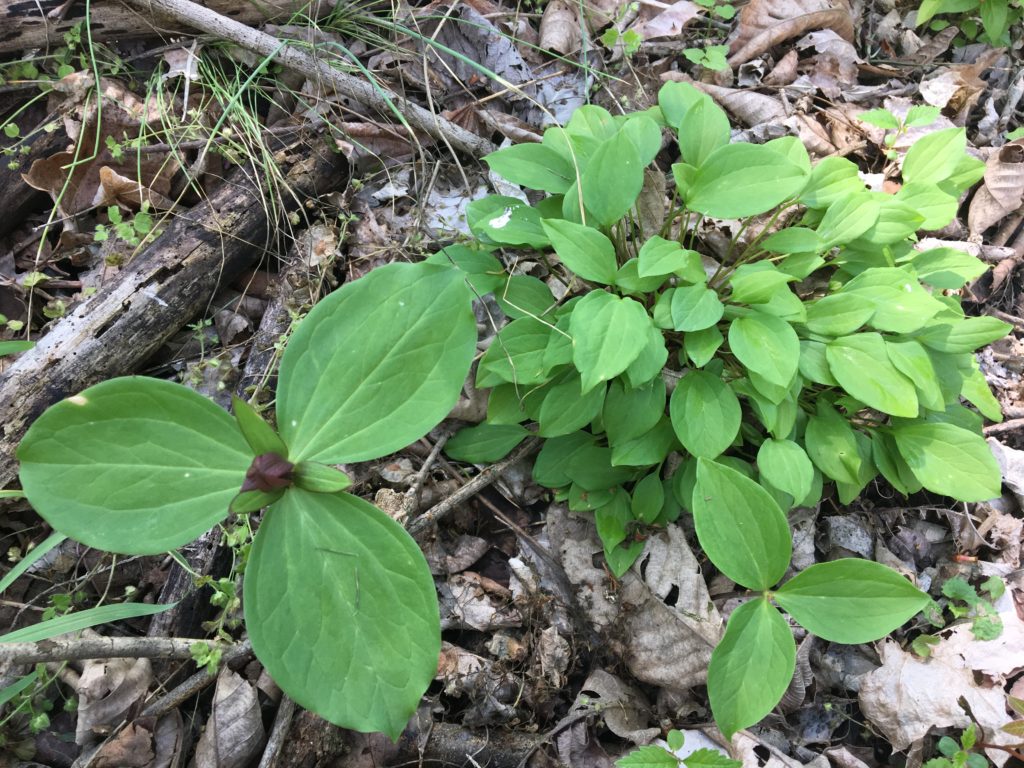Laura Baird, Assistant Preserve Manager
Spring is here and our forests have once again been transformed by delicate little wildflowers. Every spring some slopes are lucky enough to be carpeted in colorful, diverse blooms that seem to appear out of nowhere. If you revisit these spots in midsummer you’ll be hardpressed to find a single sign the dramatic display was ever there.
Many of our earliest flowers are considered “ephemerals.” They emerge early, before the trees have leaves. They flower quickly, create seed and then they disappear. But “ephemeral” does not mean short lived. Our spring wildflowers are mostly perennials, growing slowly, coming above ground and gathering their annual supply of sunlight during that short period of time between when the days get longer and when the forest gets too dark and shady.

One of our more common spring ephemerals is Trillium sessile (uncreatively given the common name of sessile trillium). Sessile trillium is often just a few inches high and has erect red flowers with three petals and three sepals sitting directly atop a whorl of three leaves. The “tri” in trillium refers to this three-ness while “sessile” refers to how the flower sits directly on the leaves, without a stalk to support it. The dark red flowers have a slightly unpleasant stink which attracts their primary pollinators of flies and beetles. The resulting seeds have a fatty appendage attached called an elaiosome, which attracts ants and wasps to carry the seed away from the mother plant.
Once an ant carries off the seed, it will take two seasons of cold for it to germinate. In its first year of growth the new seedling stays completely underground, slowly creating a root system. The year after that, a single leaf emerges. If enough energy is gathered, it will be slightly bigger the next year. In fact, it could take 10 years for a trillium to grow strong enough to produce its first flower. Some plants can live to be 25 years old if conditions are good.

Repeated trampling, grazing or picking can kill any plant, but spring ephemerals are especially vunerable because of how slowly they grow. So always stay on trail and only take photographs, but be sure to enjoy the display soon before it disappears for the year. And, if you miss your chance this year, don’t be too sad… they’ll be back next year, just a little bit bigger.